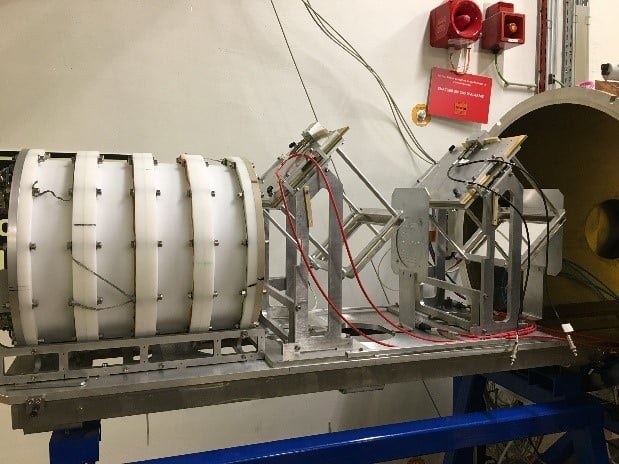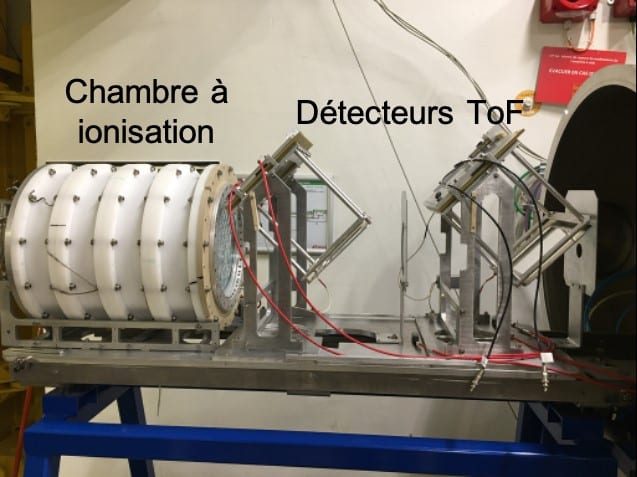- Homepage
- >
- Scientists
- >
- News & Highlights
- >
- 2023
- >
- First experience with FALSTAFF at NFS
First experience with FALSTAFF at NFS
After several years of development at Saclay, the first part of the Falstaff spectrometer was moved to GANIL in 2021 and then installed on NFS for the study of uranium 235. The experiment that took place in November and December 2022 was the first to use an actinide target on SPIRAL2. It demonstrated the good performance of this device.
The characterization of fragments in actinides neutron-induced fission has been mainly carried out until now with thermal neutrons, neutrons from reactors. With the start-up of the “Neutrons for Science” facility (NFS, SPIRAL2) it is now possible to study fission induced by neutrons from a few hundred keV up to 40 MeV, a little more than a million times more energetic. The FALSTAFF spectrometer has been developed to characterize the fission fragments (mass, energy and even charge) in this large energy range.

The measurement is based on the use of time-of-flight and position detectors (ToF detectors) and an axial ionization chamber. The resolutions in time (120 ps), position (2 mm) and energy (1%) have been optimized in order to be able to determine the masses of the fragments with a resolution lower than 3 amu (atomic mass unit) which is a challenge for direct kinematic studies for which the fragments have low energies.

Preliminary results show that the performance of FALSTAFF allows to clearly observe the evolution of the velocity and energy distributions of the fragments with the energy of the incident neutron beam. For low energy neutrons, the distributions are very asymmetric while a symmetric component appears when the energy increases. These first results are very encouraging and the experiment should continue in 2023.

